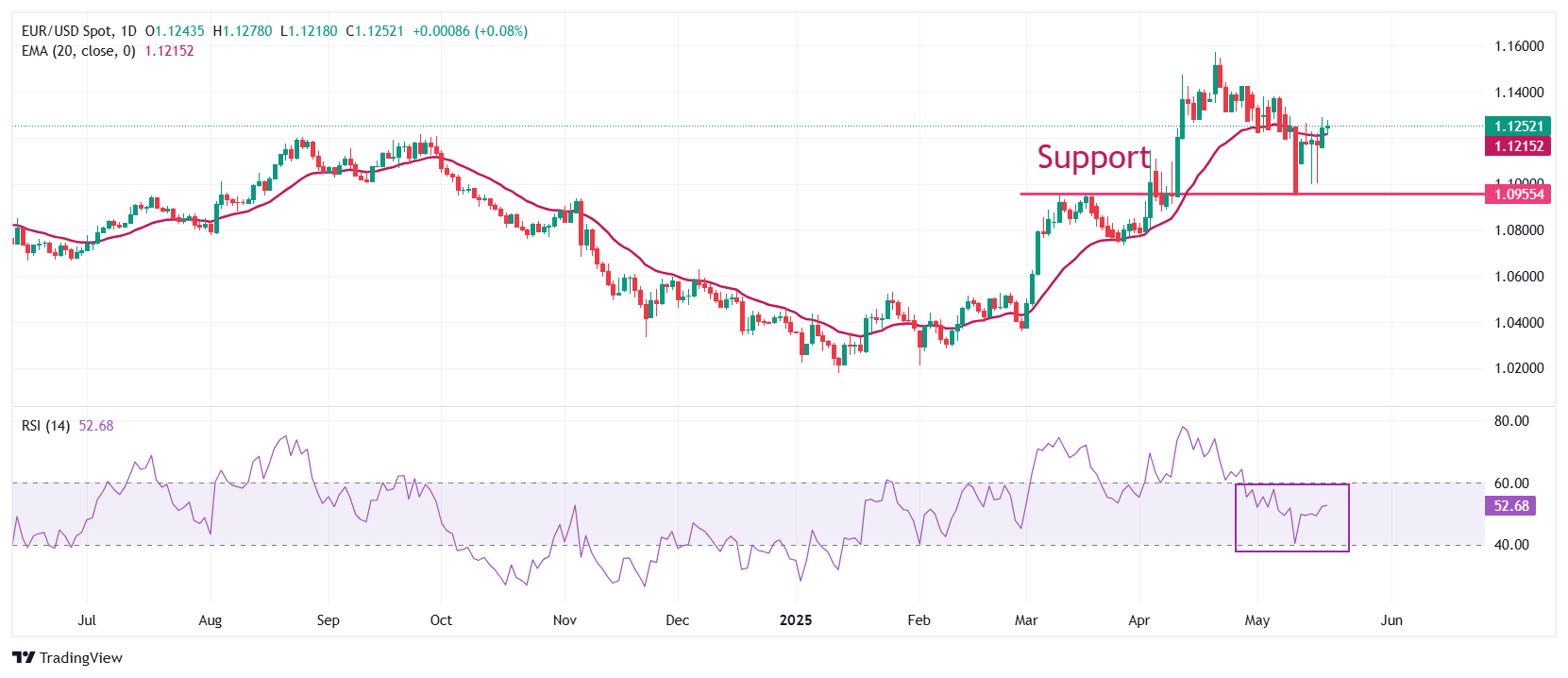-
EUR/USD climbs toward 1.1250 as the US Dollar remains under pressure following the downgrade of the US sovereign credit rating.
-
Washington flags Huawei’s AI chips as a potential risk to US export controls.
-
The European Commission projects average inflation at 1.7% for 2026.
EUR/USD continues its upward momentum, approaching the 1.1250 mark during Tuesday’s European session, building on gains from the previous day. The pair remains supported as the US Dollar (USD) comes under renewed pressure following Moody’s downgrade of the US sovereign credit rating, which has pushed the US Dollar Index (DXY) down toward the 100.00 level.
Moody’s decision to lower the US credit rating from Aaa to Aa1 has shifted investor focus to the country’s mounting $36 trillion debt burden and long-term fiscal imbalances, raising fears of a sustained rise in borrowing costs for the US government. These concerns have intensified amid expectations that President Donald Trump’s proposed “big beautiful bill” could add another $3 to $5 trillion to the national debt, further eroding confidence in the USD.
Compounding the pressure on the Greenback are fresh tensions in US-China relations. Earlier today, China accused the US of attempting to suppress the use of Huawei-made AI chips and Chinese AI models, labeling them as threats to US export controls. A spokesperson from China’s Commerce Ministry criticized the US Commerce Department’s advisory as "discriminatory" and "market distorting," urging Washington to correct its actions. Beijing also warned that such rhetoric undermines the trade agreement reached in Geneva last weekend, adding another layer of uncertainty to the USD’s outlook.
Daily Digest Market Movers: EUR/USD Gains as EU Inflation Outlook Remains Subdued
- EUR/USD continues to climb toward 1.1250, supported not only by a weaker US Dollar but also by renewed Euro (EUR) strength. The pair remains in demand despite the European Union’s executive arm cautioning that inflation could fall short of the European Central Bank’s (ECB) 2% target in the coming years.
- According to the EU's spring forecast released Monday, inflation is expected to return to the 2% target by mid-year but will likely average around 1.7% in 2026. The report cites factors such as falling energy prices, a stronger Euro, and the rerouting of Chinese goods as key contributors to potential downside inflation risks.
- Adding to the dovish tone, several ECB officials have acknowledged increasing disinflationary pressures and signaled openness to further rate cuts. Even traditionally hawkish ECB member Isabel Schnabel expressed confidence that disinflation is progressing, although she warned that US tariffs may present medium-term inflation risks.
- Looking ahead, market participants will focus on Thursday’s preliminary HCOB Purchasing Managers’ Index (PMI) data for May, which is expected to show an uptick in Eurozone business activity. Meanwhile, in the US, the S&P Global Composite PMI is forecast to maintain steady growth.
Technical Outlook:

EUR/USD is trending higher and currently holds above the 20-day Exponential Moving Average (EMA) at 1.1214, supporting a near-term bullish bias.
The 14-period Relative Strength Index (RSI) remains neutral between 40 and 60, indicating a lack of strong directional momentum.
On the upside, resistance is seen at the April 28 high of 1.1425, while key support lies at the psychological 1.1000 level.





